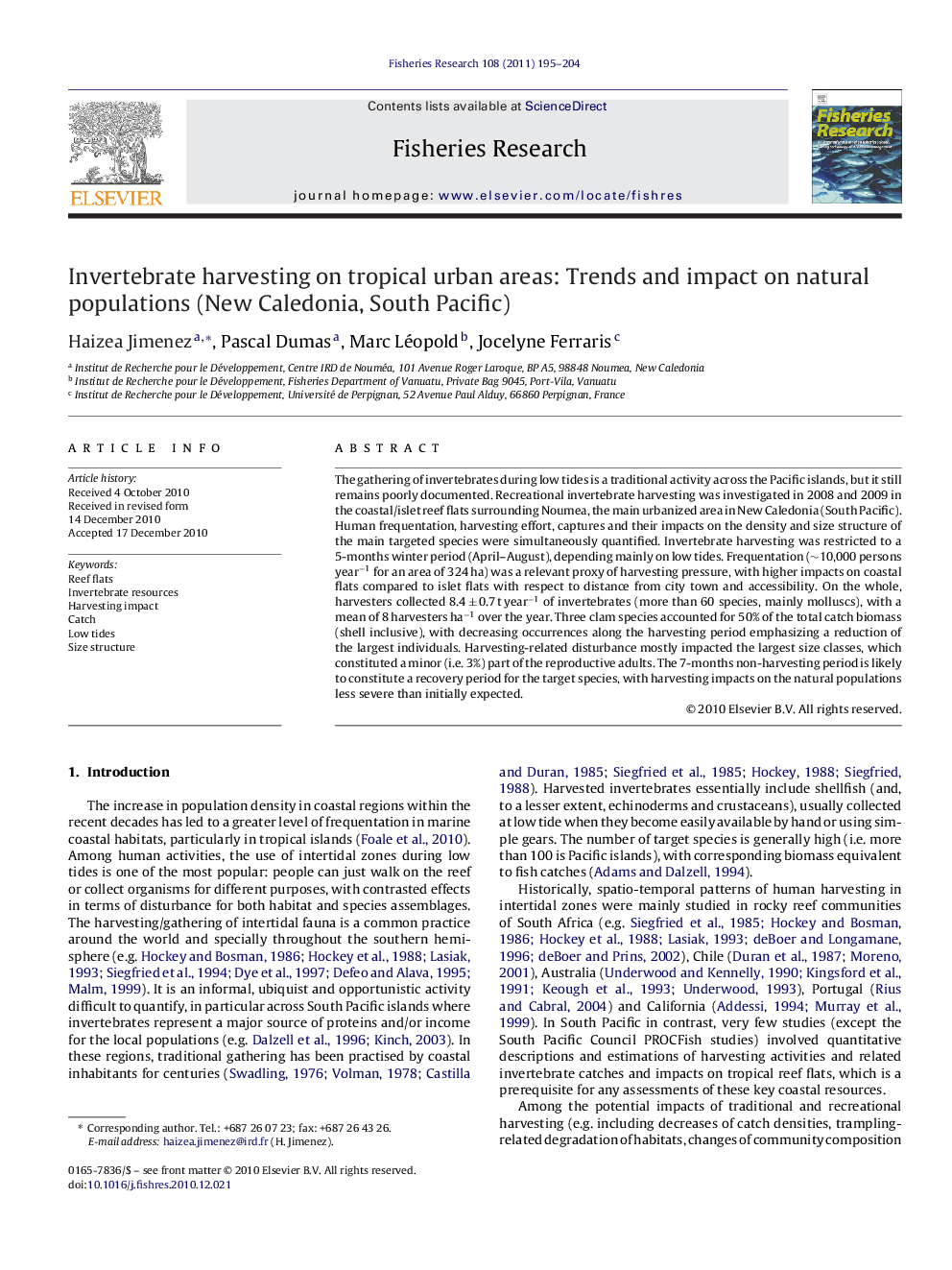| Article ID | Journal | Published Year | Pages | File Type |
|---|---|---|---|---|
| 4543731 | Fisheries Research | 2011 | 10 Pages |
The gathering of invertebrates during low tides is a traditional activity across the Pacific islands, but it still remains poorly documented. Recreational invertebrate harvesting was investigated in 2008 and 2009 in the coastal/islet reef flats surrounding Noumea, the main urbanized area in New Caledonia (South Pacific). Human frequentation, harvesting effort, captures and their impacts on the density and size structure of the main targeted species were simultaneously quantified. Invertebrate harvesting was restricted to a 5-months winter period (April–August), depending mainly on low tides. Frequentation (∼10,000 persons year−1 for an area of 324 ha) was a relevant proxy of harvesting pressure, with higher impacts on coastal flats compared to islet flats with respect to distance from city town and accessibility. On the whole, harvesters collected 8.4 ± 0.7 t year−1 of invertebrates (more than 60 species, mainly molluscs), with a mean of 8 harvesters ha−1 over the year. Three clam species accounted for 50% of the total catch biomass (shell inclusive), with decreasing occurrences along the harvesting period emphasizing a reduction of the largest individuals. Harvesting-related disturbance mostly impacted the largest size classes, which constituted a minor (i.e. 3%) part of the reproductive adults. The 7-months non-harvesting period is likely to constitute a recovery period for the target species, with harvesting impacts on the natural populations less severe than initially expected.
